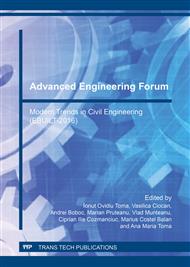p.22
p.33
p.37
p.45
p.50
p.58
p.65
p.73
p.78
Probabilistic Risk Assessment for an Art Timber Structure within an Atrium Space
Abstract:
The fire safety objectives are primarily focused on life safety issues. In addition, for particular cases, property protection and business continuity are taken into account when developing Fire Safety Strategies. The purpose of this article is to assess the fire risk associated with a timber structure within an atrium space, carrying out a qualitative and quantitative analysis.For probabilistic risk assessments, the criteria are set such that the probability of a given undesirable event is acceptably low, or As Low As Reasonably Practicable (ALARP). The acceptance criteria vary depending on the fire safety objectives, therefore, for this study, the property protection has been considered beside the life safety of the occupants.
Info:
Periodical:
Pages:
50-57
Citation:
Online since:
March 2017
Authors:
Price:
Сopyright:
© 2017 Trans Tech Publications Ltd. All Rights Reserved
Share:
Citation:


